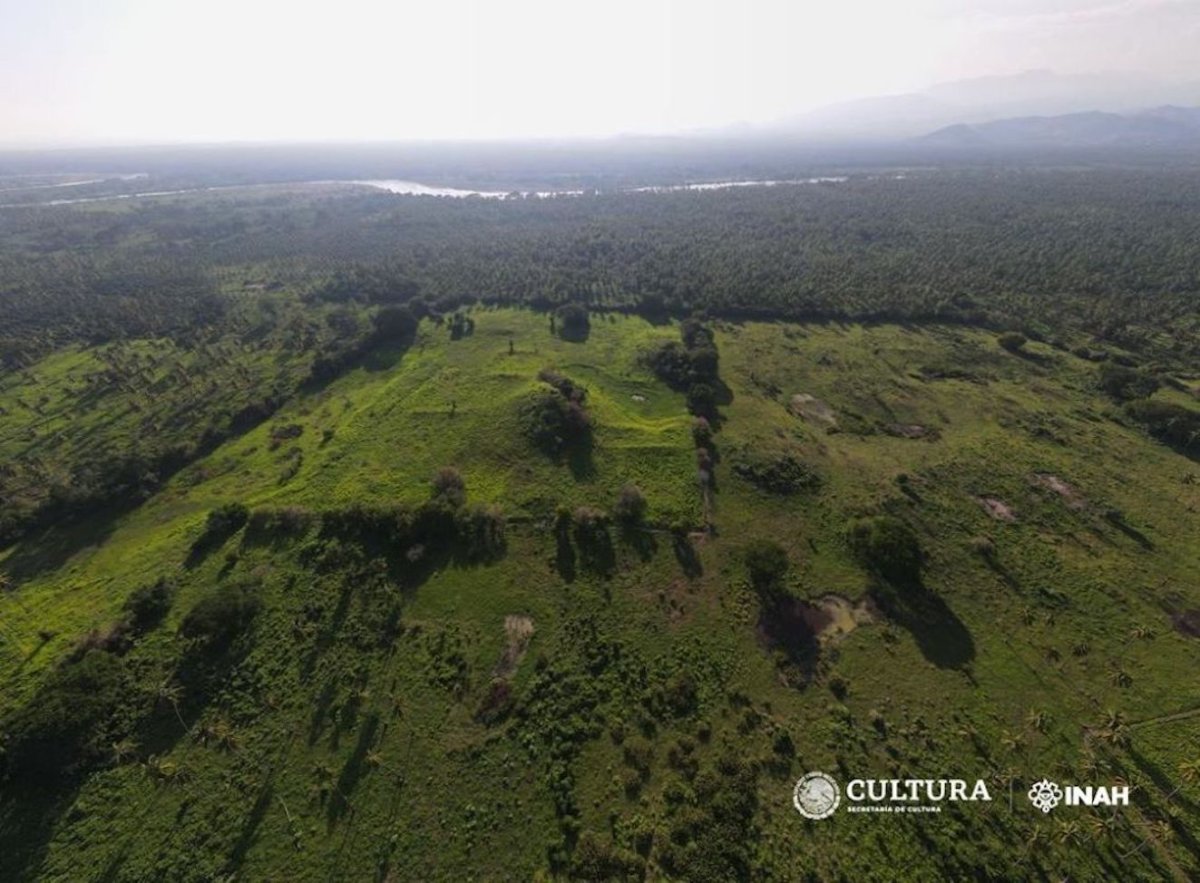An ancient settlement that could be more than 1,300 years old has been discovered in Mexico.
Archaeologists from Mexico's National Institute of Anthropology and History (INAH) uncovered the lost pre-Hispanic town in the Costa Grande region of Guerrero state, located in the southwest of the country along the Pacific coast.
The settlement, which is located on communal land, is spread out over an area of roughly 29 hectares (72 acres), according to the INAH. Archaeologists decided to investigate the patch of land after locals alerted them to the existence of several mounds—likely of pre-Hispanic origin—at the location.

INAH researchers subsequently carried out a three-day survey of the surface, during which they recorded 26 minor mounds. They also conducted an aerial survey of the site.
The minor mounds are arranged around a large central mound that stands around 82 feet high, with a base measuring 241 by 197 feet.
Archeologists identified structures such as altars and others associated with the storage of water at the site, which lies at a strategic location close to the eastern bank of the Tecpan River as well as the Tetitlán lagoon.
Researchers also found elongated structures that provide evidence of squares, residential areas and even ballgame courts, as well as stelae—upright stone slabs bearing inscriptions or illustrations that often served as gravestones in the ancient world.
In addition, the archaeologists recovered ceramic material from the surface. Analysis of these artifacts enabled the researchers to determine the period when the settlement was likely occupied.
The ceramic material indicates that the site was inhabited from the Classic period (A.D. 200-650) of Mesoamerican history until the Late Postclassic (A.D. 1200-1521) period, the researchers said.
Based on an analysis of historical sources from the 16th century, the site could correspond to the settlement of Apancalecan, one of the INAH archaeologists, Rodolfo Lobato Rodríguez, said.
Apancalecan is referenced on Plate 18 of a 16th-century manuscript known as the Matrícula de Tributos. The manuscript was produced shortly before the Spanish conquest of Mexico and records the tributes paid by conquered settlements to the Aztec Empire.
The region that Apancalecan once formed part of, known as Cihuatlan, was conquered by the Aztecs between A.D. 1497 and A.D. 1502.
After the Spanish completed their conquest of Mexico in 1521, Apancalecan was renamed Tequepa, as recorded on a map produced by cartographer Abraham Ortelius in 1570. But the exact location of the settlement was subsequently lost until the latest discovery.
Do you have a tip on a science story that Newsweek should be covering? Do you have a question about archaeology? Let us know via science@newsweek.com.
Uncommon Knowledge
Newsweek is committed to challenging conventional wisdom and finding connections in the search for common ground.
Newsweek is committed to challenging conventional wisdom and finding connections in the search for common ground.
About the writer
Aristos is a Newsweek science reporter with the London, U.K., bureau. He reports on science and health topics, including; animal, ... Read more
To read how Newsweek uses AI as a newsroom tool, Click here.






